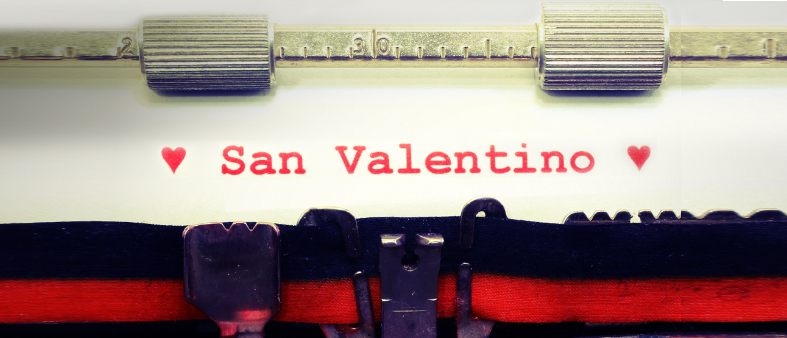
Pop quiz: what’s the most romantic language in the world?
If you answered Italian, you’re in the vast majority!
Italian, one of the primary Romance languages, has long been considered the “language of love.” That’s partly due to the tongue’s lyrical, almost melodic structure and the country’s association with St. Valentine’s Day.Let’s take a look at St. Valentine’s Day’s unique Italian roots, along with some phrases of love in Italian you’ll want to master before your trip to Italy. You’ll learn “I love you” in Italian and much more!
Italy’s Romantic Legacy: St. Valentine’s Day
Valentine’s Day is celebrated around the world but its origin story is distinctly Italian. Did you know that San Valentino was Italian? He was a Christian priest who lived between Rome and Terni—his birthplace—in the third century; a time when Christianity was outlawed in the Roman Empire. What little we know about his life is a mixture of legend and history, but we do know that he died a martyr.
But for all the love we now associate with Saint Valentine, he was actually despised by those in a position of power. At the time, Emperor Claudius II decreed a marriage ban, believing that single men made better soldiers. Valentine defied this decree and married Christian couples in secret. Word eventually got out and he was arrested and jailed, and he was commanded to renounce his faith. He refused and was executed. Early Christians celebrated him as a martyr, but it wasn’t until the Middle Ages that Pope Gelasius I bestowed sainthood on him, and he became San Valentino.
Some historians think that the celebration of San Valentino was instituted to “Christianize” the pagan festivity of Lupercalia.
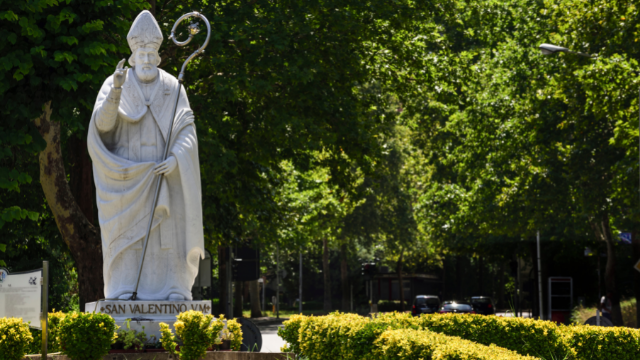
Saint Valentine is not only the patron saint of love but also of epilepsy and beekeepers, and numerous legends and folklore revolve around this figure.
For example, it is said that when the emperor found out about all these secret ceremonies, Valentine was imprisoned. There, he was said to have performed miracles. It is said that he fell in love with a blind girl, the daughter of his jailer, and made her see again.
Another legend says that he once saw a couple fighting while walking. So, he gave them a rose, told them to hold their hands together, and reconciled them. In a nutshell, he was a good couple’s therapist!
The first person to commemorate Saint Valentine’s Day as a romantic celebration was the English poet Geoffrey Chaucer with his poem “The Parliament of Fowls,” which he wrote around 1382.
The oldest known valentine still in existence was written in 1415 by Charles, Duke of Orleans, who wrote a poem to his wife while imprisoned in the Tower of London following the Battle of Agincourt.
Now that you know the curious history behind this celebration let’s look at what Italians do on this special occasion.
What about Italy, the Shakespearean “Land of Love?”
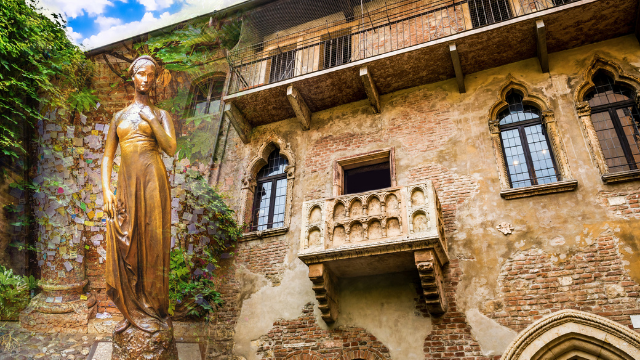
Valentine’s Day is undoubtedly celebrated in Italy. However, it is less commercialized than many other countries—although it is still common to find a variety of heart-shaped products, special restaurant offers, and cards.
What is Valentine’s Day called in Italy?
In Italy, Valentine’s Day is La Festa di San Valentino (Saint Valentine’s Celebration) or La Festa Degli Innamorati (The Lovers Celebration).
How to wish someone a Happy Valentine’s Day in Italian?
You can tell them:
Buon San Valentino! or
Buona Festa Degli Innamorati!
To celebrate this holiday, Italian lovers give red rose bouquets, plan romantic dinners, and gift each other chocolates, much like in many other countries around the world.
However, there are a few specifically Italian Valentine’s celebrations and tokens of love.
How to Celebrate Valentine Day’s In Italy
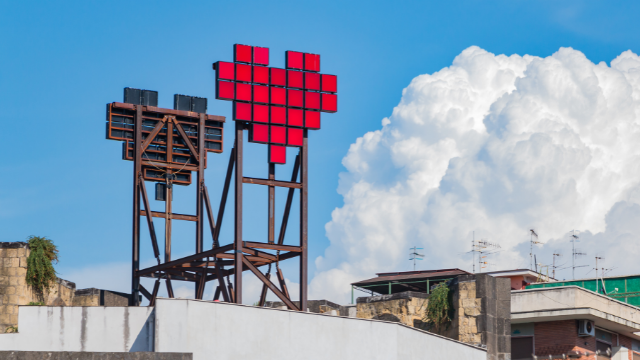
Baci Perugina
The renowned Italian chocolate maker, Perugina, celebrates this Day by making a special edition of the cioccolatini (chocolates). As usual, the foil wrapper contains a “love note” with a romantic phrase. Most people prefer classic Baci Perugina, though.
Festa Della Promessa a Terni
At the Festa Della Promessa (Promise Feast) in Terni—Saint Valentine’s hometown–on the Sunday before February 14, couples planning to marry attend a Mass and profess their love.
Verona in Love
The city of Verona, where Shakespeare’s Romeo and Juliet took place, celebrates Valentine’s Day with a four-day celebration called “Verona in Love.” A massive red heart is painted on the floor of Piazza Dei Signori, heart-shaped lanterns are placed all over the city, and more than a thousand letters addressed to Giulietta arrive each year.
Locks of Love or Lucchetti dell’Amore
Locking padlocks to railings and lamp posts is recent lore. It came about after the movie and book Ho Voglia di Te (I want you) came out. The characters of this cringe-worthy story tie a padlock with their names on it around a lamppost on the north side of Rome’s Ponte Milvio and then throw the keys in the Tiber River. Since then, thousands of Italian piccioncini (lovebirds) have flocked to railings, lamp posts, and any other thing that you can tie stuff on to lock their love. However, many municipalities have placed bans on having them because of safety concerns and decorum.
Camogli
This beautiful coastal town in the region of Liguria hosts a yearly festival called Innamorati a Camogli (Lovers in Camogli). Couples hang heart-shaped cards with their names on fishing nets on the harbor’s wall. The cards that withstand the weather conditions for the entire week represent the relationships that will stand the test of time.
Quero
In Quero, in the province of Bolzano, a massive number of oranges is rolled down a slope near the church of Saint Valentine. This “good luck,” orange-themed tradition is not the only one in Italy.
Vico del Gargano – The Village of Love
In fact, San Valentino is also patron saint of Vico del Gargano, in the Puglia region. On February 14, the town, nicknamed ‘The Village of Love’, and the saint’s statue are decorated with thousands of oranges. There is a slow procession and lots of orange juice.
You might be wondering why oranges: in Italy, flowers from the orange tree (fiori d’arancio) are associated with happy marriages (matrimonio). Orange juice, when given to a romantic interest, becomes a powerful love potion.
In Pozzoleone, instead, they organize the Fiera di San Valentino, an event that dates to the 1500s.
In Palmoli, they cover the floor of the church with bay leaves. In Padova, instead, they celebrate the love of family and children by distributing blessed keys.
Now that you can impress your lover with your newfound knowledge of Valentine’s Day in Italy let’s look at how you can express your feelings in Italian.
How to Say I Love You in Italian and Other Romantic Italian Phrases & Terms
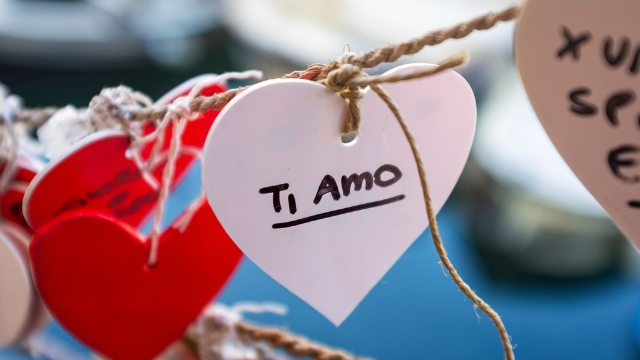
Now that you know some of the romantic roots of St. Valentine’s Day and how Italians celebrate their venerated holiday, it’s time to put this knowledge to practical use! Saying “I love you” in Italian is just the start – there are many Italian quotes for love. Below, you’ll find these expressions of love and other words associated with Valentine’s Day, like chocolate, roses, and more!
- Ti amo – I love you (if you’re going to learn one, ‘I love you’ in Italian is the most important)
- Amore mio – My love
- Tesoro mio – My treasure
- Ti amo tanto/molto. – I love you a lot.
- Mi sto innamorando di te. – I’m falling in love with you.
- Mi sono innamorata/o di te. – I fell in love with you.
- Buon San Valentino. – Happy Valentine’s Day.
- Sei sempre nel mio cuore. – You are always in my heart.
- Ti amerò per sempre. – I’ll always love you.
- Sei l’amore della mia vita. – You’re the love of my life.
- Sei la mia vita. – You’re my life.
- Sono pazzo di te. – I’m crazy about you.
- Ti amo da impazzire/alla follia. – I love you like crazy.
- Ti amo da morire. – I love you to death. (not as bleak in Italian)
- Voglio solo te. – I want only you.
- Ti voglio bene. – I love you. (often used between friends)
- Mi vuoi sposare? – Will you marry me?
- Ti adoro. – I adore you.
- Una rosa rossa – A red rose
- Un mazzo di fiori – A flower bouquet
- Un mazzo di rose rosse – A bouquet of red roses
- I cioccolatini – Chocolates
- Un anello – A ring
- Gli innamorati – Lovers
- Una cena romantica – A romantic dinner
- Un regalo – A present
- Un bigliettino – A note
- Una cartolina – A card
- Una lettera d’amore – A love letter
- Palloncini – Balloons
- Un bacio – A kiss
- Un abbraccio – A hug
- Un cuore – A heart
- Cupido – Cupido
Celebrating Romance in the Italian Language
Whether you want to take your love on a romantic getaway to Venice, are planning your honeymoon in the Tuscan countryside, or traveling to the Eternal City with a loved one, you can learn all those phrases of love in Italian with Pimsleur!
Our Italian courses and lessons provide a practical, proven path to speaking the language conversationally. So, if you’d like to learn some romantic Italian phrases or how to say “I love you” in Italian (and much more), you’ve come to the right place!From conversational speaking to basic Italian quotes for love, we’re ready to help you speak the language of love today. And why stop with the linguistics of love? You can also learn terms of endearment and more with our All Access subscription. If you love to learn new languages, Pimsleur will help you reach your goals!
No Comments for "How to Say “I Love You” in Italian"